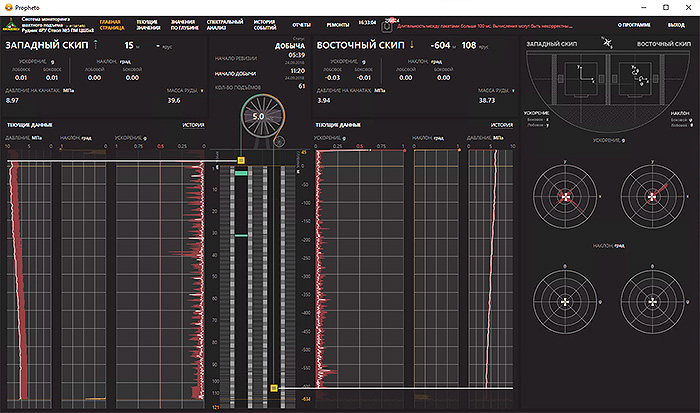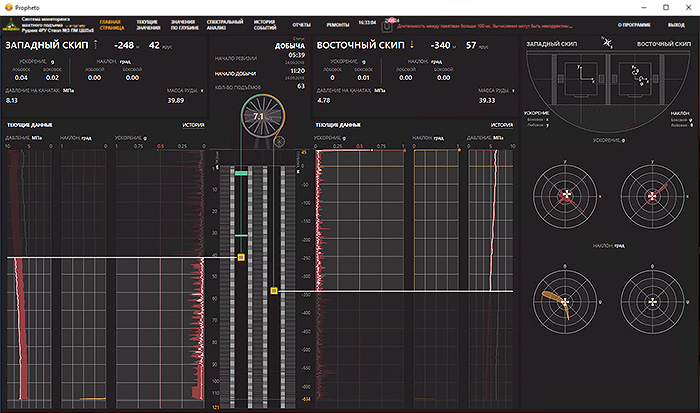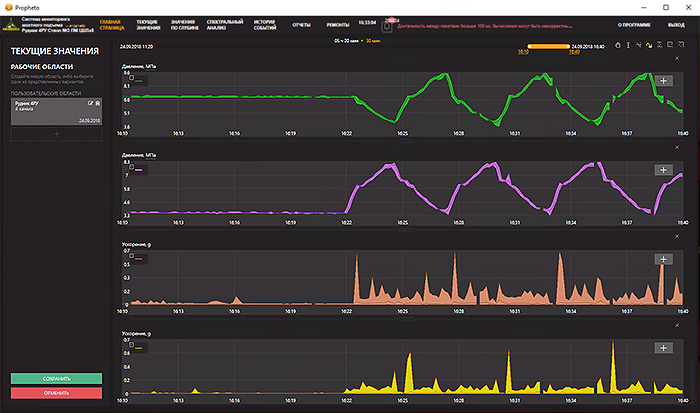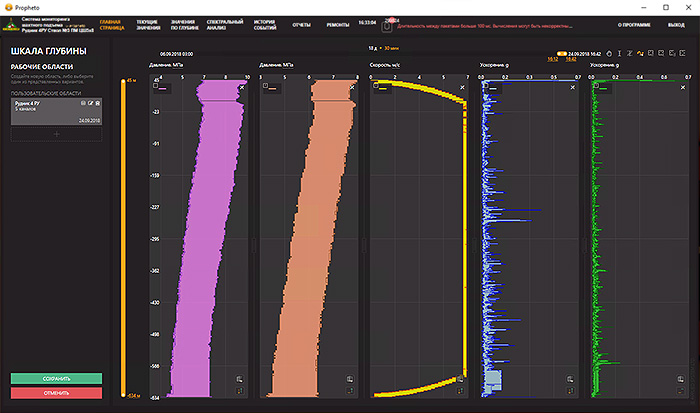Customer
TLT Service, a Belarusian provider of integrated industrial solutions, engineered a hardware and software system for hoisting shaft condition monitoring on behalf of one of the world's leading potash fertilizer manufacturers. This innovative solution stands unrivaled in the global market, addressing the challenge of enhancing it with intuitive and modern visualization software for condition monitoring and managing maintenance procedures.
Challenge
The system's requirements encompassed:
• Visualization of mine shafts with user-friendly issue mapping.
• Display of measurements from shaft conveyances.
• Acquisition and visualization of a full data stream (1 kHz) from all sensors.
• Data acquisition and visualization of average readings (1 - 10 Hz) spanning the last 5 years.
• Swift access (0.25 s) to any measurement.
• Maintenance procedure logging.
• On-demand report generation for any hoisting shaft section.
• Utilization of a single client for various servers with server selection capability.
• Adaptation to unmanned scenarios with full-screen mode, Full HD resolution, and automated system recovery.
• Multimedia content support, including conversations.
Solution
The Propheto platform was chosen as the cornerstone of the condition monitoring system. Developed by Applied Systems, this platform offers the requisite data transmission capacity and services for data storage, visualization, and analysis. Communication with the Propheto platform core is facilitated by WCF, ensuring a distributed system with parallel monitoring accessible to shaft operators and maintenance crews.
The software adeptly visualizes complex plots and renders tens of thousands of points at a 2 Hz frequency. The GUI seamlessly integrates with Propheto platform services, including the alarm handling system, access control system, and analytic report generator, among others. Development of this specialized modular interface relied on .NET WPF, Infragistics Chart controls, PRISM, and MEF.
Results
The HMI design was successfully conformed and implemented over 12 two-week sprints in close collaboration with the customer. Sprint planning and requirements adjustments were made throughout the development process, in response to customer feedback. Comprehensive user documentation was also developed, and unwavering support was provided to TLT Service during commissioning and startup processes.




